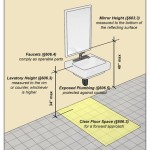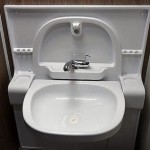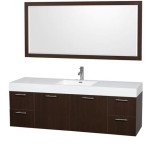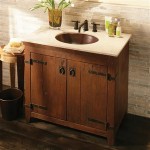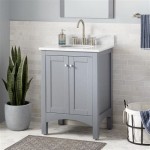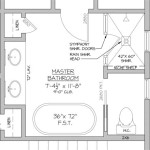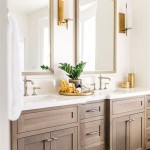```html
Why Do Ants Come In Bathrooms?
Ants are ubiquitous insects that can be found in various environments, including human dwellings. Their presence indoors, particularly in bathrooms, is a common concern for homeowners. Understanding the reasons behind ant infestations in bathrooms is crucial for effective prevention and control strategies. This article aims to explore the various factors that attract ants to bathrooms, providing insights into their behavior and how to mitigate their presence.
Bathrooms, despite their primary function of hygiene, often provide attractive conditions for ants. These conditions include moisture, food sources, and access points. The specific reasons for ant infestations are often multifaceted and require a comprehensive understanding of ant biology and behavior.
Moisture Sources: A Primary Attractant
Ants, like all living organisms, require water to survive. Bathrooms, with their inherent humidity and water fixtures, are prime locations for ants seeking moisture. Leaky pipes, dripping faucets, and condensation are common sources of water that can attract ants. These moisture sources can be particularly attractive to ants during dry periods or in arid climates when water is scarce elsewhere.
Different ant species have varying tolerances to dehydration, but all require a consistent source of water. Worker ants are often responsible for locating and transporting water back to the colony. Even small droplets of water, such as those found on shower walls or around sinks, can be sufficient to attract ants. Moreover, damp environments encourage the growth of mold and mildew, which can serve as additional food sources for certain ant species.
The presence of standing water, even in small quantities, can create breeding grounds for other insects, which in turn can attract ants. For instance, drain flies breeding in bathroom drains can become a food source for some ant species. Addressing moisture problems is therefore a critical step in preventing ant infestations in bathrooms.
Furthermore, the materials used in bathrooms, such as porous tiles and grout, can absorb and retain moisture, creating favorable conditions for ants. This is especially true in areas that are not properly ventilated. Insufficient ventilation can lead to a buildup of humidity, exacerbating moisture-related problems and increasing the likelihood of ant infestations.
Food Sources: Beyond the Obvious
While bathrooms are not typically thought of as food-rich environments, they can offer a variety of food sources for ants. These sources may not be as obvious as spilled food crumbs in a kitchen, but they are nonetheless attractive to ants. Organic matter, such as hair, skin cells, and soap residue, can accumulate in sinks, drains, and shower stalls, providing a food source for certain ant species.
Sweet substances, such as toothpaste and lotions, can also attract ants. Even small amounts of these substances left on countertops or floors can be enough to draw ants into the bathroom. Similarly, sugary or protein-rich residues from personal care products can serve as a food source. This highlights the importance of maintaining cleanliness and promptly cleaning up any spills or residues.
In addition to direct food sources, bathrooms can also contain indirect sources. For example, decaying organic matter in drainpipes can attract ants. The buildup of hair, soap scum, and other debris can create a breeding ground for bacteria and other organisms that serve as food for ants. Regular cleaning of drains is therefore essential for preventing ant infestations.
Moreover, the presence of other insects in the bathroom, such as silverfish or drain flies, can attract ants. These insects can serve as a food source for ants, either directly or indirectly through their waste products. Controlling these other insect populations can therefore help to reduce the attractiveness of the bathroom to ants.
Access Points: How Ants Enter the Bathroom
Ants can enter bathrooms through a variety of access points, including cracks in walls and floors, gaps around pipes and fixtures, and openings around windows and doors. These access points may be small and difficult to detect, but they can provide easy entry for ants seeking food, water, or shelter.
Cracks in the foundation or exterior walls of the house can provide a pathway for ants to enter the building and then move into the bathroom. Similarly, gaps around pipes and wires that enter the bathroom can serve as entry points. These gaps are often overlooked but can be significant sources of entry for ants and other pests.
Poorly sealed windows and doors can also provide access for ants. Gaps around the frames or under the doors can allow ants to crawl into the bathroom. Weather stripping and caulking can help to seal these gaps and prevent ant entry. Regular inspection and maintenance of windows and doors are therefore important for preventing ant infestations.
In addition to structural access points, ants can also enter the bathroom through plumbing systems. Ants can travel through drainpipes and emerge from sinks, tubs, and showers. This is particularly common in older homes with aging plumbing systems. Inspecting and maintaining plumbing systems can help to identify and address potential entry points for ants.
Furthermore, ants can follow electrical wires and plumbing lines from outside the house into the bathroom. These lines often run through walls and floors, providing a hidden pathway for ants to travel. Sealing around these lines can help to prevent ant entry.
The type of construction materials used in the bathroom can also influence the ease with which ants can enter. Porous materials, such as wood and certain types of tiles, can provide hiding places for ants and make it easier for them to establish colonies. Using non-porous materials and properly sealing surfaces can help to prevent ant infestations.
Finally, it's worth noting that ants often leave pheromone trails to guide other ants to food and water sources. If ants have previously found a source of attraction in the bathroom, they may continue to return even after the source has been removed. Cleaning surfaces with a disinfectant or vinegar can help to remove these pheromone trails and discourage ants from returning.
By addressing moisture problems, eliminating food sources, and sealing access points, homeowners can significantly reduce the likelihood of ant infestations in their bathrooms. Regular cleaning and maintenance are essential for preventing ant problems and maintaining a healthy and pest-free environment.
```
Are Ants Attracted To Your Bathroom Terminix

How To Stop Ants From Invading Your Bathroom Identification And Prevention Tips Tabor Pest Control

Niagara Pest Control Why Are There Carpenter Ants In The Bathroom

Boise Idaho Pest Control Pestcom

Why Do I Have Ants In My Bathroom

Keeping Ants Out Of Your Bathroom Extermpro

How To Get Rid Of Ants In The Bathroom 2024 24h Pest Pros

Have Ants In Bathroom 2024 4 Simple Steps That Work

Aussie Home S Ants In Your Pants Loo Horror And What It Could Mean Daily Mail

Boise Idaho Pest Control Pestcom
Related Posts
